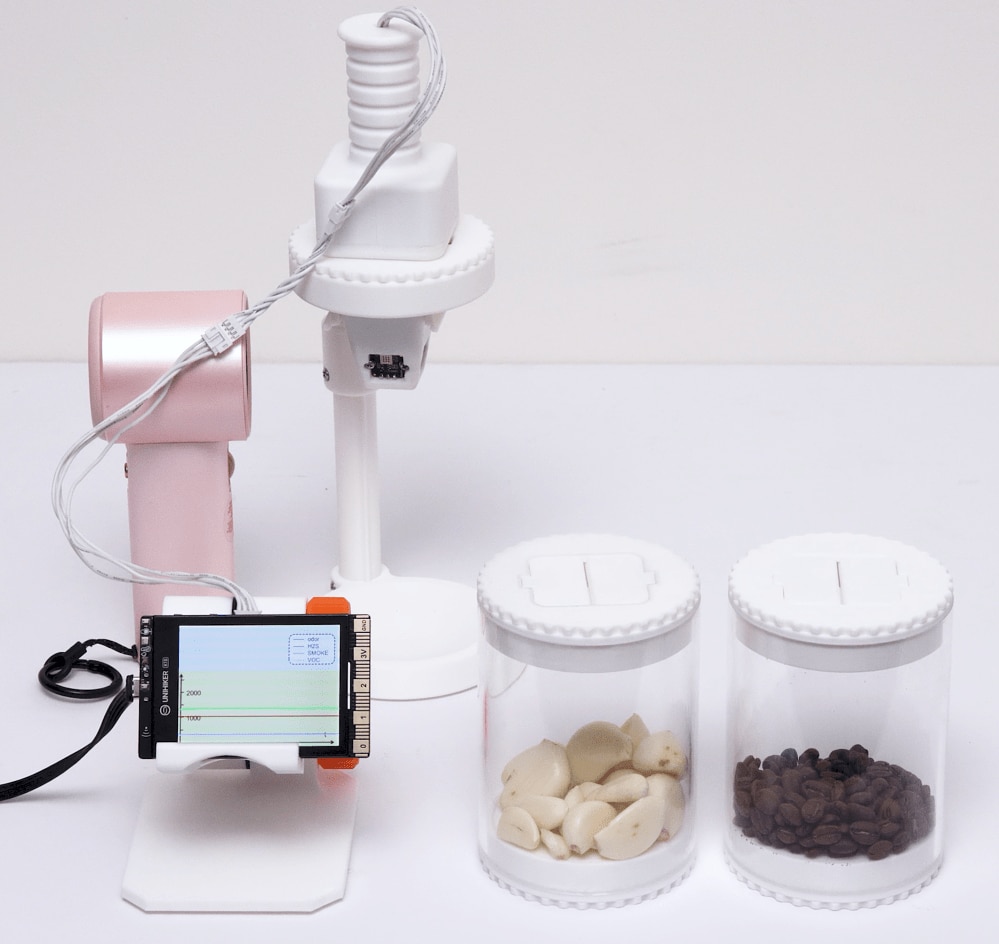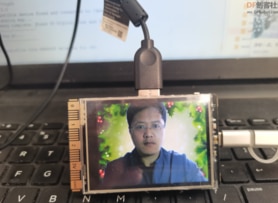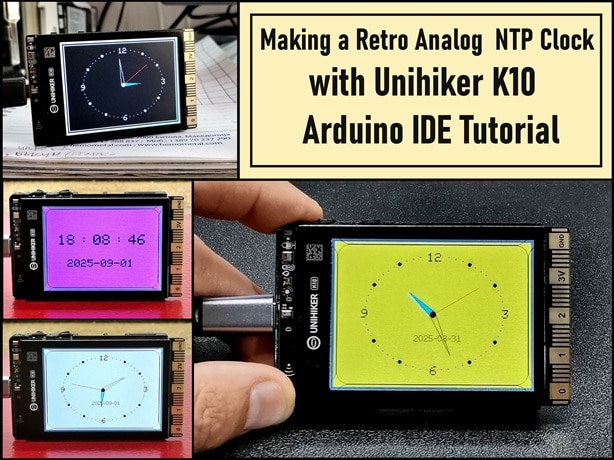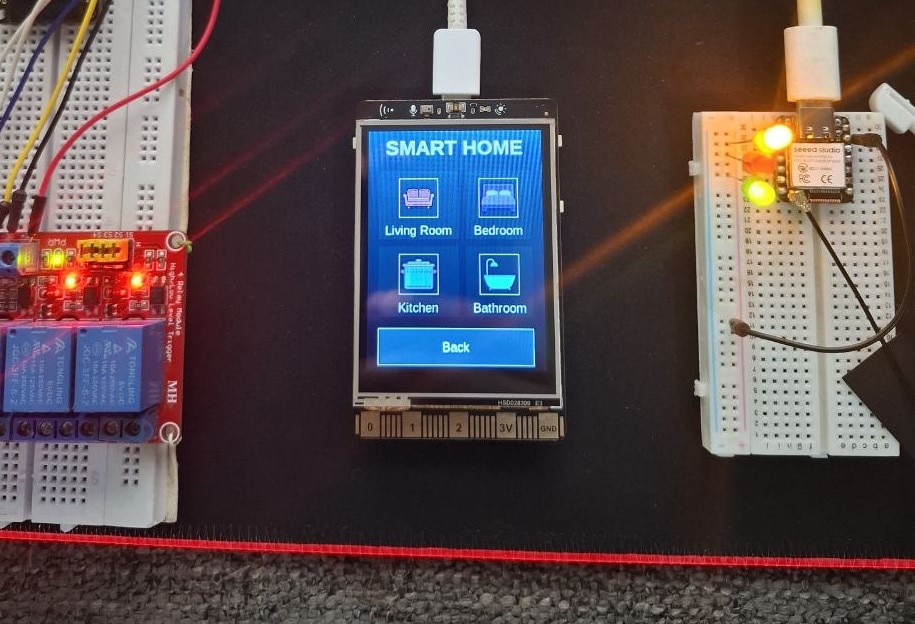Making a Desktop Geiger Counter with Unihiker
2023-10-11 | By DFRobot
License: Attribution Non-Commercial No Derivatives Single Board Computers
Making a Desktop Geiger Counter with Unihiker --- Real-Time Nuclear Radiation Monitoring
I. Introduction
Radiation monitoring is super important these days. It's not just about health and safety - it also reveals some fascinating mysteries of science! Nuclear radiation refers to particles or electromagnetic waves given off by radioactive stuff. There are three types: alpha, beta, and gamma radiation. These radiations are part of our daily lives, with uses in medical diagnostics, energy production, and irradiating food. However, they also pose some risks. Understanding how these radiations work and safe levels of exposure can help us manage potential dangers better.
I had the idea to use a Unihiker to make a desktop Geiger counter. Basically, it's a device to detects the intensity of ionizing radiation. A typical Geiger counter has a sealed inflated tube and display that counts detected particles over time. I'll share how I DIY'ed the Geiger counter, to help with checking radiation levels in daily life.
1. Hardware Selection
HARDWARE LIST
1Unihiker
1Geiger Counter Module
1DHT20 Temperature & Humidity Sensor
1U-Shaped Male to Female Type C Extension Cord
2. Wiring Diagram
- Connect the Geiger counter module to Pin 23 of the UniHiker board
- Connect the DHT20 temperature and humidity sensor to the I2C interface of the UniHiker board
3. Print 3D Shell
3D files download here: https://www.thingiverse.com/thing:6224720/files
III. Principle of Geiger Counter1. How to measure radiation?
Let me explain the working principle of a Geiger counter. A Geiger counter is a gas-discharge detector filled with easily ionized gas. When radiation enters the tube, it causes gas ionization and generates current pulses. These pulse signals are amplified and become counting pulses. We just need to count the number of pulses per unit time to directly calculate the radiation level. Compared to other detectors, the biggest advantage of a Geiger-Müller tube is its digital output signal, which allows precise radiation counting without complex analog circuits. So, by counting the radiation particles passing through the gas tube per minute, we can determine the radiation level of the current environment.
2. How to calculate radiation levels?
There are three key units: CPM, millisieverts (mSv/h), and microsieverts (μSv/h). CPM (Counts Per Minute) is a unit of measurement for radiation levels, in counts/minute. It represents the number of times radiation particles hit the detector in one minute. Radiation levels can be measured using the equilibrium dose rate per hour: (Sv/h), millisieverts (mSv/h), and microsieverts (μSv/h). The conversion formula is: 151CPM = 1μSv/h1Sv/h = 1000mSv/h = 1000000μSv/h
3. How to evaluate and quantify radiation levels?
The "Basic Standards for Radiation Health Protection" states that the annual dose equivalent limit for individual public exposure is: whole-body uniform irradiation not exceeding 5mSv; any single tissue/organ not exceeding 50mSv; the annual whole-body dose equivalent limit throughout life should not exceed 1mSv.The standard for indoor nuclear radiation dose is 0.5μSV/h. Based on the annual public radiation dose limit of 5mSv/h, and calculating with 365*24 hours, the dose rate should not exceed 0.5μSv/h, which is considered normal. Generally, the normal indoor radiation dose rate is below 0.20μSv/h, mostly around 0.13. However, radiation levels in bathrooms and kitchens tend to be higher.
III. Program Editing1. Use Python to calculate μSv/h
Calculate how many times the pin interrupt is triggered in a time interval (count) to determine how many radiation particles passed through. Here we first set it to calculate every 5 seconds (time_gap). Then use 60 seconds/5 seconds * particles passed to calculate particles per minute (cpm). Since 151CPM = 1μSv/h, we can derive the μSv/h value.
2. Load the pinpong library to control the Geiger counter in Python.
Load the GUI library to display numbers on the screen.Connect the sensor to pin p23 as signal input.
import timefrom pinpong.board import Board,Pin Board("unihiker").begin() from unihiker import GUI gui=GUI() btn = Pin(Pin.P23, Pin.IN)
import time
from pinpong.board import Board,Pin
Board("unihiker").begin()
from unihiker import GUI
gui=GUI()
btn = Pin(Pin.P23, Pin.IN)
3. Set variables and functions:


















